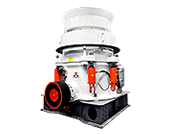A jaw crusher is an excellent choice for crushing hard rock gold ore due to its robust design, high reduction ratio, and ability to handle tough materials. Here’s a detailed breakdown of its suitability and key considerations:
 Why Use a Jaw Crusher for Hard Rock Gold Ore?
Why Use a Jaw Crusher for Hard Rock Gold Ore?
1. High Crushing Efficiency
– Jaw crushers apply strong compressive force to break hard rocks like quartz, granite, and sulfide ores.
– Ideal for primary crushing before further processing (e.g., ball milling or gravity separation).
2. Durability & Reliability
– Built with heavy-duty materials (e.g., manganese steel jaws) to withstand abrasive gold-bearing ores.
– Minimal maintenance compared to other crushers.
3. Adjustable Output Size
– Adjust the discharge opening to control the product size (typically 1–3 inches for initial crushing).
4. Versatility
– Works well with free-milling  d ores as well as refractory ores that require finer grinding later.
d ores as well as refractory ores that require finer grinding later.
Key Considerations When Selecting a Jaw Crusher
– Feed Size: Ensure the crusher can handle the maximum rock size from your mine (common feed openings: 5″x7″ up to 30″x48″).
– Capacity: Match throughput (tons per hour) with your operation scale.
– Power Source: Electric or diesel options available for remote locations.
– Discharge Setting: Adjustable for optimal feed size for secondary processing (e.g., hammer mill or ball mill).
– Wear Parts: Replaceable jaw plates extend machine life.
Recommended Jaw Crushers for Gold Mining
1. Small-Scale Miners (1–5 TPH):
– Morse Bros 4×6″ or 5×7″ Jaw Crusher – Compact, affordable, good for sampling/testing.
– MBMM JC25 (~3–5 TPH) – Popular among artisanal miners.
2. Medium-Scale Operations (10–50 TPH):
– Terminator RJ Series (~10–20 TPH) – Lab-tested, high-performance model.
– Metso Nordberg C Series (~15–50 TPH) – Industrial-grade reliability.
3. Large-Scale Mining (>50 TPH):
– Terex Jaques ST47 (~150–300 TPH) – Heavy-duty primary crus





Leave a Reply